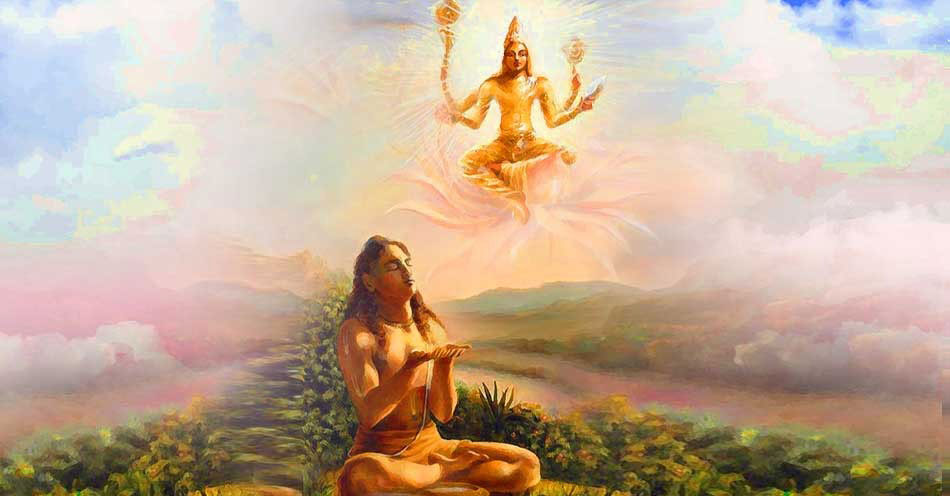Siddhis of the Ancient Rishis: Real Spiritual Powers or Illusion?
- Sonali Singh
- Jul 25
- 3 min read
In the sacred lands of Vedic Bharat, nestled between the Himalayas and the Indian Ocean, the Rishis—enlightened sages of deep tapasya—discovered extraordinary capabilities of the human body, mind, and consciousness. These powers, known as Siddhis, are described in the Patanjali Yoga Sutras, Srimad Bhagavatam, and various shashtras of Sanatan Dharma. But what are Siddhis? Are they real spiritual attainments or just mystic illusions?
So, what are these Siddhis? Are they real, or just illusionary tricks of the mind? Let's explore.

What are Siddhis?
The word Siddhi comes from the Sanskrit root 'sidh' meaning "to accomplish" or "to perfect." Siddhis are extraordinary spiritual, mental, or physical abilities attained through yogic sadhana, mantra japa, and guru kripa (the grace of a realized teacher).
The Yoga Sutras of Maharishi Patanjali, one of the foundational texts of yogic philosophy, describe many Siddhis:
“ततः प्रातिभादि श्रावणवेदनादर्शास्वादवार्ता जायन्ते।” —Patanjali Yoga Sutra 3.36
“Then arise intuitive knowledge, hearing beyond the physical ear, touch beyond the skin, vision beyond the eyes, taste and smell beyond the ordinary senses.”
These are known as Vibhutis—manifestations of spiritual accomplishment—not meant to be flaunted, but to be transcended on the path to kaivalya, or liberation.

Eight Major Siddhis (Ashta Siddhi)
Sanatan texts speak of Ashta Siddhis, granted by intense spiritual practices and divine grace:
Anima – ability to become minute like an atom
Mahima – ability to become huge
Garima – ability to become heavy
Laghima – ability to become weightless
Prapti – ability to obtain anything
Prakamya – ability to fulfill any desire
Ishitva – lordship or supremacy
Vashitva – power to control all
Lord Krishna Himself speaks in the Bhagavatam (11.15.32):
“मत्तः सर्वं परं नास्ति नान्यदस्ति धनञ्जय। एष तेऽभिहितः संक्षेपेणाऽऽदित्यमण्डलसंनिभः॥”
“There is nothing superior to Me, O Arjuna. I am the source of all Siddhis, shining like the sun.”

Ten + Five Vaishnava Siddhis from Śrīmad Bhāgavatam
The Śrīmad Bhāgavatam (11.15) lists more subtle siddhis like:
Trikālajñatvam – Knowledge of past, present, future
Paracittajñānam – Mind-reading
Manojavaḥ – Moving with the speed of mind
Svacchanda-mṛtyuḥ – Voluntary death
Parakāya-praveśanam – Entering another’s body
सिद्धयः सत्त्वगुणाभिवृद्ध्या न पृथग् भवन्ति हि
"Siddhis naturally arise as sāttvic qualities increase." — Bhāgavatam 11.15.33

How Are Siddhis Attained?
According to Patañjali (Yoga Sūtra IV.1):
जन्मौषधिमन्त्रतपःसमाधिजाः सिद्धयः ॥ ४.१॥
"Siddhis arise from birth, herbs, mantras, austerities, or samādhi."
Here, abhyāsa (regular practice) and vairāgya (non-attachment) form the core disciplines. These aren’t tricks—they are the fruits of lifelong sādhana, often under the direct transmission of a realized guru.
Yet, Patañjali warns us:
ते समाधवुपसर्गाः व्युत्थाने सिद्धयः ॥ ३.३७॥
"These powers can become obstacles if they distract from the path to samādhi."
This is a profound teaching in Sanātangyan: siddhis are not the goal. Mokṣa (liberation) is.

Who Used Siddhis in Vedic Bharat?
Spiritual history is rich with beings who wielded these powers—not for fame, but to uplift dharma.
🕉️ Gorakhnāth Mahāyogi
The revered Nāth yogi is known for siddhis such as parakāya praveśa (entering other bodies) and levitation. In Yoga Bīja, he writes:
सिद्ध्यभावे योगः अपूर्णः।
“Without siddhi, yoga is incomplete.”
But even he emphasized their limited role in the final spiritual goal.

🕉️ Ādi Śaṅkarācārya
The great Advaita guru is said to have entered the body of a king (to answer a philosophical debate about household life) using parakāya praveśa. But he returned quickly, as his goal was not experience—but enlightenment.

Siddhis: Boon or Barrier?
From the surface, Siddhis may appear attractive, but the Vedic view is clear — Moksha, not Siddhi, is the ultimate goal. A true sadhu does not chase Siddhis. As Swami Vivekananda warned, “Do not seek power. Seek Truth. The rest shall follow.”
Sri Ramakrishna, when asked about Siddhis, smiled and said, “If a child plays with clay toys, what value is gold to him?”
In conclusion, Siddhis are extraordinary spiritual powers documented in ancient Vedic texts, attainable through disciplined yogic practices and divine grace. While these abilities are real and have been demonstrated by great sages, they are considered secondary to the ultimate goal of spiritual liberation (moksha). True wisdom cautions against becoming attached to Siddhis, viewing them as potential distractions on the path to enlightenment rather than ends in themselves.

Comments